SEALEY CVJ Boot, drive shaft rubber, hose clamp tensioning tool Heavy-Duty
$52,70
Arrives in 3-4wd
ADD TO BASKET
Ear-Type Clip Pliers - Extra Heavy-Duty Steel jaws with PVC coated handles for added comfort. Each handle features a 1/2"Sq drive for use with a torque wrench and breaker bar where vehicle maker demands specific band tensions. Suitable for all ear-type CVJ boot clips.
Sealey
Sealey was established in 1978 and has become well known for its innovation, quality and service. Headquartered in the UK, Sealey offers over 12,000 products and 5 million spare parts in over 70 countries. The company's options are tools, industrial goods and their spare parts. Sealey is a 100% family business.Delivery method

DHL Express
Fast Delivery (Shipping discount for order starting from 700 € or $)
Fast Delivery (Shipping discount for order starting from 700 € or $)
$29,00
Delivery date 2025-06-12

Postal office
To the nearest Postal office
To the nearest Postal office
$24,10
Delivery date 2025-06-25

To nearest Postal office
Economy (Max 2kg ,60cm)
Economy (Max 2kg ,60cm)
$17,30
Delivery date 2025-06-25

Courier International
To Home or Office (Shipping discount for order starting from 700 € or $)
To Home or Office (Shipping discount for order starting from 700 € or $)
$45,90
Delivery date 2025-06-25
$27,10
$28,80
-6%
ADD TO BASKET
Arrives in 3-4wd
$121,10
ADD TO BASKET
Arrives in 3-4wd
$178,60
ADD TO BASKET
Arrives in 3-4wd
$22,90
ADD TO BASKET
Arrives in 3-4wd
$41,70
ADD TO BASKET
Arrives in 4-5wd
$110,10
ADD TO BASKET
Arrives in 3-4wd
$22,90
ADD TO BASKET
Arrives in 3-4wd
$28,50
ADD TO BASKET
Arrives in 3-4wd
$59,00
ADD TO BASKET
Arrives in 3-4wd
Which hand tool steel is the most durable?
 As we all know, different steels are used to make different hand tools. The properties and strength of the steels are given below.
... More...
As we all know, different steels are used to make different hand tools. The properties and strength of the steels are given below.
... More...
Car chassis construction and parts
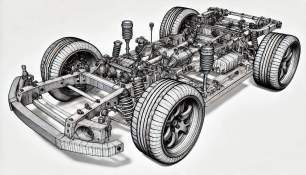 Car chassis construction and parts
The chassis of a car is an important system of a vehicle that connects the wheels and the body, allowing safe and stable movement. It consists of various mechanisms and components that ensure the vehicle's handling, comfort and roadholding. In this article, we will provide an overview of the chassis structure and introduce in more detail important components such as wishbones, steering arm, pendulum arm, track rod, steering knuckle, hinges, bridge beam and steering rods.
... More...
Car chassis construction and parts
The chassis of a car is an important system of a vehicle that connects the wheels and the body, allowing safe and stable movement. It consists of various mechanisms and components that ensure the vehicle's handling, comfort and roadholding. In this article, we will provide an overview of the chassis structure and introduce in more detail important components such as wishbones, steering arm, pendulum arm, track rod, steering knuckle, hinges, bridge beam and steering rods.
... More...
Car suspension system: importance, working principle and types
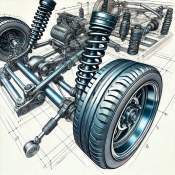 The car's suspension system is one of the most important mechanisms that ensures driving comfort, stability and safety. The suspension is designed to absorb shocks and vibrations caused by road irregularities, while ensuring constant contact of the wheels with the road surface. This helps to improve the vehicle's handling and protects the car's structure from excessive load and wear.
... More...
The car's suspension system is one of the most important mechanisms that ensures driving comfort, stability and safety. The suspension is designed to absorb shocks and vibrations caused by road irregularities, while ensuring constant contact of the wheels with the road surface. This helps to improve the vehicle's handling and protects the car's structure from excessive load and wear.
... More...
Car chassis and undercarriage
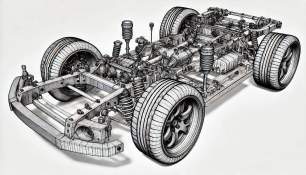 The undercarriage of a car, or car chassis and undercarriage, consists of several key components that play a role in the car's movement, appearance, and safety. It is an additional system that connects the car body to the wheels and allows the vehicle to be used and steered. The following is an overview of the main details of the undercarriage of a car.
1. Suspension system
The suspension system connects the wheels of a car to the body or frame and ensures a comfortable and stable ride. Its function is to absorb shocks and vibrations that occur on rough roads. The main elements of the suspension are:
Shock absorbers: Absorb the movement of the springs and keep the tires against the road.
Springs (coil springs or leaf springs): Hold the weight of the car and provide a smoother ride.
Control arms: Connect the wheels to the chassis and allow vertical movement.
Coupling Rod: Reduce body roll when cornering.
Bushes: Soft connections that hold parts in place and absorb vibrations.
2. Steering system
The steering system allows the driver to steer the car and turn the wheels in the desired direction. Located at the bottom are:
Steering knuckles: Connect the steering rod to the wheel hub or power steering.
Steering rack: Transmits the steering force to the wheels.
Ball joints: Movable joints that allow the wheels to turn and the suspension to move simultaneously.
3. Drive system
The drive system transmits engine power to the wheels and provides the vehicle with propulsion. Its main components, at the bottom, are:
Driveshafts: Transmit power from the engine to the wheels.
Axle shafts: Connect the differential to the wheel hub.
Propeller shaft: Used on rear-wheel drive and all-wheel drive vehicles to transmit power from the engine to the rear axle.
Differential: Divides power between the left and right wheels, allowing them to turn at different speeds when cornering.
4. Brake System
The brake system is also located partly under the car and allows the car to slow down and stop. Main parts:
Brake discs and brake pads: Slow down the rotation of the wheels.
Brake calipers: Press the brake pads against the brake discs.
Brake hoses: Transport brake fluid to the brake calipers.
5. Fuel System
The parts of the fuel system located under the car:
Fuel tank: Stores fuel. Usually located in the rear of the car.
Fuel lines: Transport fuel from the tank to the engine.
Fuel pumps: Ensure that fuel is pumped to the engine at the correct pressure.
6. Exhaust system
The exhaust system safely directs the engine's combustion gases out of the car and reduces the amount of pollutants. Located at the bottom are:
Exhaust pipes: Direct exhaust gases out of the engine.
Catalytic converter: Reduces harmful exhaust gases.
Muffler: Reduces engine noise.
Lambda sensors: Measure the oxygen level in the exhaust gases and help the engine optimize the fuel-air mixture.
7. Frame and Bottom Cover
The frame and bottom cover of a car connect all the components into one whole and protect the important parts:
Frame or chassis: The base of the entire car structure, to which the suspension, engine and other parts are attached.
Bottom Cover: Protects the underside of the car from dirt, stones and corrosion.
8. Wheels and tires
The wheels are in direct contact with the road surface and provide movement and control:
Tires: Keep the car on the road and absorb minor impacts.
Wheel hubs: Connect the wheel to the drive system and braking system.
Bearings: Allow the wheels to rotate freely with minimal friction.
9. Transmission and clutch (partially in the lower part)
The transmission and clutch transmit the engine's power to the drive system:
Manual transmission or automatic transmission: Converts the engine's speed to the drive wheels.
Clutch assembly: Connects or disconnects the engine's power to the transmission.
Summary
The undercarriage of a car consists of many interconnected systems that ensure the stability, movement and safety of the car. It houses the suspension, steering system, drive system, brakes, exhaust system and frame. All of these components must work together to make the car controllable and safe to drive. Regular maintenance and timely detection of problems will help prevent major breakdowns and extend the life of the car.
... More...
The undercarriage of a car, or car chassis and undercarriage, consists of several key components that play a role in the car's movement, appearance, and safety. It is an additional system that connects the car body to the wheels and allows the vehicle to be used and steered. The following is an overview of the main details of the undercarriage of a car.
1. Suspension system
The suspension system connects the wheels of a car to the body or frame and ensures a comfortable and stable ride. Its function is to absorb shocks and vibrations that occur on rough roads. The main elements of the suspension are:
Shock absorbers: Absorb the movement of the springs and keep the tires against the road.
Springs (coil springs or leaf springs): Hold the weight of the car and provide a smoother ride.
Control arms: Connect the wheels to the chassis and allow vertical movement.
Coupling Rod: Reduce body roll when cornering.
Bushes: Soft connections that hold parts in place and absorb vibrations.
2. Steering system
The steering system allows the driver to steer the car and turn the wheels in the desired direction. Located at the bottom are:
Steering knuckles: Connect the steering rod to the wheel hub or power steering.
Steering rack: Transmits the steering force to the wheels.
Ball joints: Movable joints that allow the wheels to turn and the suspension to move simultaneously.
3. Drive system
The drive system transmits engine power to the wheels and provides the vehicle with propulsion. Its main components, at the bottom, are:
Driveshafts: Transmit power from the engine to the wheels.
Axle shafts: Connect the differential to the wheel hub.
Propeller shaft: Used on rear-wheel drive and all-wheel drive vehicles to transmit power from the engine to the rear axle.
Differential: Divides power between the left and right wheels, allowing them to turn at different speeds when cornering.
4. Brake System
The brake system is also located partly under the car and allows the car to slow down and stop. Main parts:
Brake discs and brake pads: Slow down the rotation of the wheels.
Brake calipers: Press the brake pads against the brake discs.
Brake hoses: Transport brake fluid to the brake calipers.
5. Fuel System
The parts of the fuel system located under the car:
Fuel tank: Stores fuel. Usually located in the rear of the car.
Fuel lines: Transport fuel from the tank to the engine.
Fuel pumps: Ensure that fuel is pumped to the engine at the correct pressure.
6. Exhaust system
The exhaust system safely directs the engine's combustion gases out of the car and reduces the amount of pollutants. Located at the bottom are:
Exhaust pipes: Direct exhaust gases out of the engine.
Catalytic converter: Reduces harmful exhaust gases.
Muffler: Reduces engine noise.
Lambda sensors: Measure the oxygen level in the exhaust gases and help the engine optimize the fuel-air mixture.
7. Frame and Bottom Cover
The frame and bottom cover of a car connect all the components into one whole and protect the important parts:
Frame or chassis: The base of the entire car structure, to which the suspension, engine and other parts are attached.
Bottom Cover: Protects the underside of the car from dirt, stones and corrosion.
8. Wheels and tires
The wheels are in direct contact with the road surface and provide movement and control:
Tires: Keep the car on the road and absorb minor impacts.
Wheel hubs: Connect the wheel to the drive system and braking system.
Bearings: Allow the wheels to rotate freely with minimal friction.
9. Transmission and clutch (partially in the lower part)
The transmission and clutch transmit the engine's power to the drive system:
Manual transmission or automatic transmission: Converts the engine's speed to the drive wheels.
Clutch assembly: Connects or disconnects the engine's power to the transmission.
Summary
The undercarriage of a car consists of many interconnected systems that ensure the stability, movement and safety of the car. It houses the suspension, steering system, drive system, brakes, exhaust system and frame. All of these components must work together to make the car controllable and safe to drive. Regular maintenance and timely detection of problems will help prevent major breakdowns and extend the life of the car.
... More...
How to replace the control arm on your car yourself?
 The control arm is an important part of a car's suspension system, connecting the wheel to the car's frame and helping to maintain stability, handling, and ride comfort. If the control arm starts to wear out or become damaged, it can cause the car to lose control and uneven tire wear. Replacing the control arm is not the easiest job, but it can be done at home if you have the necessary tools and a little technical knowledge.
What do you need?
... More...
The control arm is an important part of a car's suspension system, connecting the wheel to the car's frame and helping to maintain stability, handling, and ride comfort. If the control arm starts to wear out or become damaged, it can cause the car to lose control and uneven tire wear. Replacing the control arm is not the easiest job, but it can be done at home if you have the necessary tools and a little technical knowledge.
What do you need?
... More...





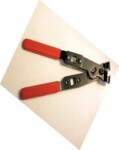


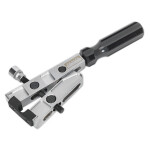
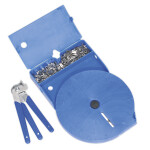
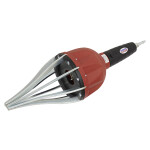






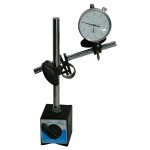
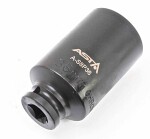



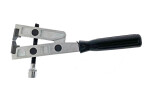

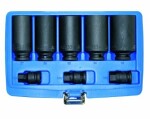
 The data shown here, especially the complete database of car spare parts, may not be copied. It is strictly prohibited to duplicate the data and database and distribute the same, and/or instruct third parties to engage in such activities, without prior consent from TecAlliance. Any use of content in a manner not expressly authorized constitutes copyright infringement and violators will be prosecuted.
The data shown here, especially the complete database of car spare parts, may not be copied. It is strictly prohibited to duplicate the data and database and distribute the same, and/or instruct third parties to engage in such activities, without prior consent from TecAlliance. Any use of content in a manner not expressly authorized constitutes copyright infringement and violators will be prosecuted.